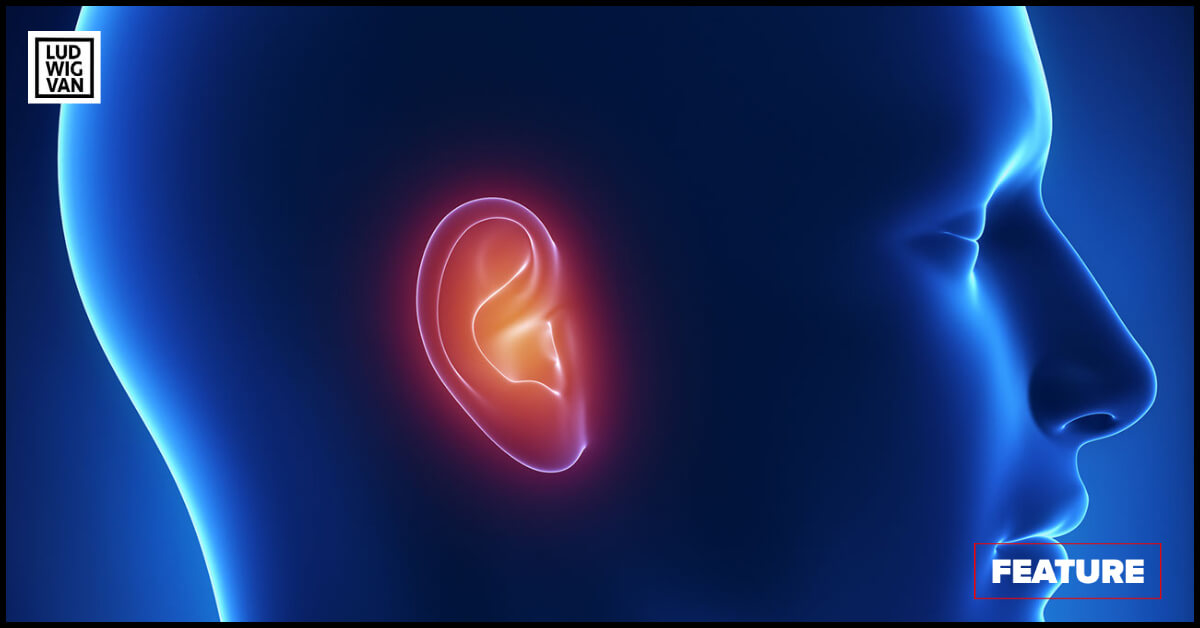
Hearing phantom music may seem more like a gift than a disorder, but there is a clinical name for it: Musical Ear Syndrome.
Musical Ear Syndrome (MES) is the term used to describe the way some people hear music where it doesn’t exist. The sounds don’t fall into the debilitating tinnitus category. Some psychiatric disorders can cause auditory hallucinations of various types, but people with MES routinely hear music, singing, or chanting.
- The sounds may be vague — as if they were coming from another room.
- There may or may not be an objective source for the sound — common background noises like a fan or air conditioner can trigger it, or there may be no stimulus at all.
- What their brains experience, either way, is music or voice.
Essentially, their brains are modifying the sound they actually hear, such as the drone of a space heater or frequent passing trains, and converting it to music.
The perception of patterns
How does this happen? It’s actually an extension of how the brain normally processes sound. Human brains are hardwired to recognize patterns. That’s how we are able to interpret all sensory input, not just auditory data.
- It’s how babies sort through the sounds they hear to recognize patterns and repeat them, as part of learning language.
- The brain’s ability to recognize patterns doesn’t distinguish between specific uses, such as language — it simply notes the pattern.
- To speed up decision-making, your brain will often force feed perceived data into patterns it already knows.
That, in essence, is the root of MES. The brain is going the extra step of interpreting and experiencing the data as music.
- Apophenia is where the brain perceives pseudo-patterns in random data;
- Pareidolia is where the brain perceives a pattern that does not exist specifically in audio or visual data.
A lifelong accompaniment
MES is quite common, and sometimes goes along with other forms of hearing loss, but may be experienced on its own. On an online forum discussing the issue, one poster commented about their experience.
“I would hear faint voices — whispering, conversing, singing, or chanting! It sounded like a crowded room, full of people at a party in a distant room somewhere in the building. After a while I came to enjoy the sound, as they seemed to be enjoying themselves at the ‘party,’ and it helped lull me to sleep at night.”
The power of suggestion
Researchers at Lafayette College published a paper on Auditory Pareidolia in The Journal of Cognitive Psychology in 2015. Their paper indicates that MES may be brought on or enhanced by psychological priming.
Specifically, they looked at the concept in the context of reality TV shows about paranormal phenomena, where sounds are recorded, and there is already an underlying assumption that those noises represent some sort of spiritual communication. The participants, in other words, were being primed to hear something significant in the white noise.
“Recent research has suggested that people who hold paranormal beliefs may be more susceptible to some perceptional illusions,” the researchers noted.
“Pareidolia is the tendency to perceive meaningful forms in suggestive configurations of ambiguous stimuli. Common examples of pareidolia include the perception of faces in nature (such as in the configurations of clouds or knots on trees) or in human-made objects e.g., grounded electrical outlets in the USA appear to have a pair of eyes and a mouth,” they explain.
While it may seem generally innocuous, however, that power of suggestion can become a volatile hot button.
In 2008, makers of a Fisher Price doll had to pull the Little Mommy Cuddle ‘n Coo toy because more and more people became convinced they heard her saying “Islam is the light” in what was meant to be unintelligible baby-like noise. Other people claimed to have heard “Satan is king”.
The toy was pulled from sale the same year it came out.
#LUDWIGVAN
Get the daily arts news straight to your inbox.
Sign up for the Ludwig van Daily — classical music and opera in five minutes or less HERE.
- INTERVIEW | Composer Ari Kinarthy And Director Jeff Lee Petry Talk About Ari’s Theme, Premiering At Hot Docs - April 26, 2024
- PREVIEW | Creators & Performers Natalya Gennadi And Kristine Dandavino Talk About Grandma’s Shawl - April 26, 2024
- PREVIEW | Artistic Director Emily Cheung Dives Into Little Pear Garden Dance Company’s History & 30th Anniversary Peformance - April 26, 2024



